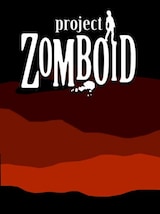If you’ve ever noticed while playing that your character or weapon has suddenly become weaker and you’ve wondered why, or you’ve come across the word “nerf” and wondered what it could mean, today we’re going to try to explain.
Nerf Meaning in Gaming
The developers often use this to ensure that none of the player’s items or abilities are too strong and that the game is fair to everyone. Very often during playing you can hear that someone’s character has been “nerfed”. It just means that somebody has been weakened to make the game more equal for everyone and also to make it more challenging.
History of the Term
Like most gaming terms, Nerf has a very interesting history. The term comes from the name of the Nerf company, which manufactures toys for children, including toy weapons. What distinguishes this company is the fact that the toys are soft, which is reminiscent of in-game situations where weapons are often transformed into much weaker “rubber” ones.
The term gained recognition in the late 1990s and became popular for multiplayer games in particular.
What are Patches
It is time to discover the meaning of another word connected with Nerf – patches. Patches are updates that are meant to balance the game when a weapon or character is, in the opinion of the developers, too powerful. Patches can also refer to changes in game mechanics, for example when a character attacks too quickly and their range is weakened.
Patches can also contain elements that allow the power of an item, character or skill to be increased – in which case they are called buffs and are the opposite of nerfs. They are introduced when an element of the game is too weak to make it attractive to the player. Both nerfs and buffs are key elements in games such as League of Legends, where a large number of players are involved.
Examples of Nerfs
Now that we know the definition and Nerf meaning, let’s take a look at specific examples of nerfs according to:
1. Characters
- weakening of the character if they eliminate opponents too quickly
- increasing the cooldown, i.e. the renewal time of an ability when used too often
- reducing the range of a character’s attacks
2. Weapons
- limitation of weapon range
- reduction of the damage inflicted by weapons if it hits too many opponents
- reduction in the number of cartridges, which decreases its effectiveness
3. Abilities
- the intentional shortening of the duration of a skill
- increasing the cost of using a skill if it requires specific resources, e.g. energy
- limiting the range of a skill when it is too powerful and dominant
Impact of Nerfs
While nerfs can positively affect gameplay by making it more fair and varied, they can also unduly weaken certain weapons or characters. This often frustrates players, especially those who have spent a lot of time developing an item that is ultimately weakened. Too many nerfs can be met with a negative reaction from the community, forcing a team of developers to face a wave of criticism and introduce further patches that re-enforce certain elements of the game.
There is also a perception that Nerfs are introduced to make players nervous or to make them spend more money, but in reality they are meant to improve gameplay and make it more balanced.
And there you have it! If you ever hear “I’ve been nerfed” during a game, you no longer have to wonder about the meaning – now you can confidently join the discussion!











